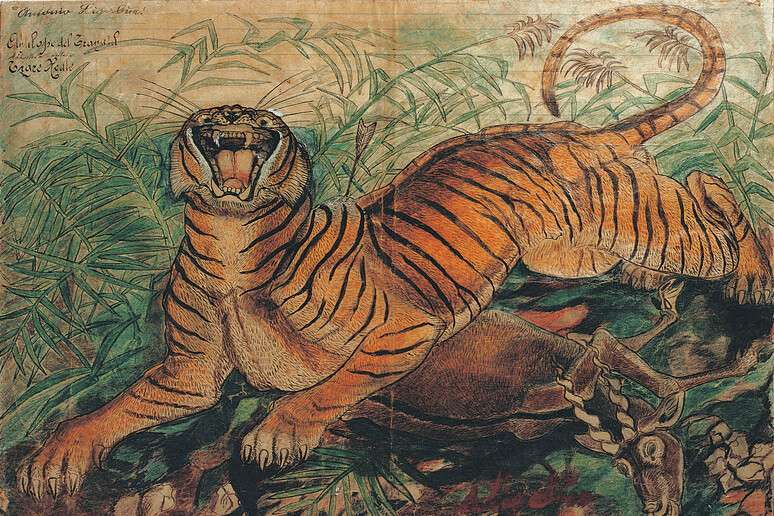With over 100 works including paintings, drawings, engravings and sculptures, a large exhibition will celebrate the 50th anniversary of the death of Antonio Ligabue, among one of the most ingenious and original Italian artists of the 20th century.
The masterpieces of the Swiss painter will be on display from May 31 to November 8 in the spaces of the Palazzo Bentivoglio in the town of Gualtieri in Reggio Emilia, the town in the Po Valley where the artist lived from 1919 to 1965, the year of his death.
The important retrospective, titled "Antonio Ligabue 1899-1965", will make up the first step of the activities of the newly-instituted Fondazione Museo Antonio Ligabue (Antonio Ligabue Museum Foundation), founded this year with the aim of preserving and promoting the memory of this extraordinary artist, marked by a dramatic life tormented by mental illness.
The exhibition was born from the request of the town of Gualtieri, together with the Banco Emiliano and Girefin Spa, the Foundation (which will manage the Antonio Ligabue Museum) found its headquarters the Palazzo Bentivoglio, recently remodeled following damage it sustained during the 2012 earthquake.
And it is in the spectacular Salone dei Fasti (Hall of Splendor), also known as the Hall of the Giants, that the permanent collection of the works of Ligabue will be housed, along with temporary exhibits promoted by the Museum.
The Foundation's head is Livia Bianchi, assisted by a board of directors made up of Achille Brunazzi and Stefano Landi, while the director is Sandro Parmeggiani, art historian and critic, who was previously the head of Palazzo Magnani, a 16th-century palace housing a permanent fine art collection and an exhibition space in Reggio Emilia.
Parmeggiani, together with Sergio Negri, is the curator of this celebratory exhibition, for which approximately 100 works were chosen, some of which have never before been publicly shown, among which are 80 oil paintings, 15 drawings, 10 engravings, and 10 sculptures in bronze and terracotta.
The paintings on display, many of which are considered the artist's best masterpieces, will be subdivided into the three periods in which Ligabue's art is generally divided (1928-1939; 1939-1952; 1952-1962), and will cover all the themes of his painting: wild and domestic animals, Swiss and Po Valley landscapes, interiors, portraits and self-portraits.
This collection of works also reconstructs the troubled existential odyssey of the artist born in Zurich in 1899.
Forced by authorities to leave Switzerland for his turbulent life, Antonio Ligabue arrived in 1919 in Gualtieri (hometown of the man that his mother married in 1901) and the impact of this new environment immediately revealed itself to be sad and painful.
The first paintings, in which are revealed an important interest for natural history museums and animals in general, date to the end of the 1920s, a period in which, among other things, Ligabue met Marino Mazzacurati in Gualtieri.
A difficult and tormented life, marked by hostility, misunderstandings and periods as a patient in psychiatric hospitals, which Ligabue dedicated entirely to painting and sculpture, despite widespread derision and lack of appreciation for his work.
This is another reason why the anthologist of Palazzo Bentivoglio wants to create a mainstay from which to start over in an accurate critical and historical evaluation of his work, capable of highlighting its undeniable value in the context of Italian and European art, beyond the misleading definition of "naive" that has for too long accompanied him and has marred understanding of his work.
ALL RIGHTS RESERVED © Copyright ANSA











